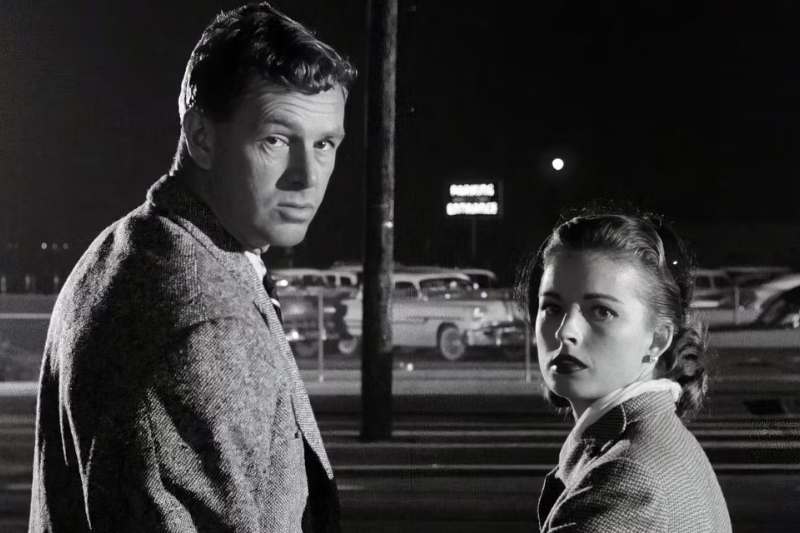
Quentin Tarantino’s Reservoir Dogs is one of the most influential independent films of the 1990s. It introduced a new style of storytelling—sharp dialogue, complex characters, and a nonlinear narrative that keeps viewers hooked. But few people realize that Tarantino’s debut was deeply inspired by an earlier master: Stanley Kubrick.
Kubrick’s early work, especially his 1956 heist film The Killing, played a huge role in shaping how Tarantino approached Reservoir Dogs. This connection reveals a fascinating story about influence, innovation, and the evolution of cinema.
The Killing tells the story of a meticulously planned racetrack heist. Kubrick’s film is known for its precise direction and clever storytelling. It uses a nonlinear timeline, showing the same events from different points of view. This technique builds suspense and lets the audience piece together the plot bit by bit.
For Tarantino, this was a masterclass in how to tell a crime story differently. Instead of showing the heist itself, Kubrick focuses on the planning and fallout, revealing the complex motives and tensions between characters.
When Tarantino wrote Reservoir Dogs, he took these elements to heart. The film is not about the heist, which is never fully shown. Instead, it focuses on the aftermath—how suspicion, betrayal, and secrets tear the group apart.
Like Kubrick, Tarantino used a nonlinear narrative. The film jumps back and forth in time, revealing different perspectives and pieces of the story. This keeps viewers engaged, slowly uncovering what really happened.
The tension and suspense that Kubrick built with careful pacing and character focus clearly influenced Tarantino’s style.
Kubrick’s The Killing doesn’t just show a heist. It explores the personalities and flaws of each team member. Every character has secrets and motivations that affect the plan.
Tarantino took this idea and expanded it. In Reservoir Dogs, the characters are given colorful nicknames like Mr. White and Mr. Pink. Their interactions, conflicts, and mistrust drive the story.
Tarantino’s famous dialogue scenes reflect Kubrick’s influence. The conversations reveal character traits and raise tension, instead of relying on action alone.
One of the key elements Tarantino borrowed from Kubrick is the nonlinear timeline. Kubrick’s film jumps through different moments around the heist, creating suspense by showing events out of order.
Reservoir Dogs does the same. Flashbacks and shifting perspectives slowly reveal the story’s truth. This method encourages the audience to stay alert and engaged, piecing together clues.
This approach also highlights character development, making the story richer and more complex.
Kubrick’s The Killing is cold and methodical. It builds tension through silence, precise camera work, and minimal music. This creates an eerie, focused mood that pulls viewers into the world of the heist.
Tarantino’s style is more raw and energetic, but he shares Kubrick’s love for building tension with dialogue, pacing, and carefully chosen music. The iconic scene in Reservoir Dogs where “Stuck in the Middle With You” plays over a shocking moment is a perfect example of Tarantino’s use of mood and irony—something Kubrick also mastered in his films.
The connection between Kubrick’s The Killing and Tarantino’s Reservoir Dogs shows how filmmakers build on past masterpieces to create something new.
Kubrick’s careful craftsmanship and narrative innovation gave Tarantino a framework. Tarantino then added his unique voice—mixing pop culture, humor, and violence—to create a modern classic.
This lineage helps us appreciate Reservoir Dogs not just as a fresh debut, but as part of a larger film tradition.
Kubrick’s influence on Tarantino is a testament to how classic films continue to inspire new generations. It reminds us that even groundbreaking work often stands on the shoulders of giants.
For fans of crime films, understanding this connection enriches the viewing experience. It’s a chance to see how two visionary directors, decades apart, used the heist genre to explore human nature, tension, and storytelling.
How Stanley Kubrick’s Heist Film Inspired Quentin Tarantino’s Reservoir Dogs is more than a trivia fact. It’s a story about creative inspiration and evolution in cinema.
Kubrick’s The Killing showed that a heist film could be more than action—it could be a study of people and tension. Tarantino took that lesson and made it his own, delivering a film that changed indie filmmaking forever.
If you love Reservoir Dogs, watching The Killing is a fascinating way to see where some of its genius comes from. It’s a clear example of how film history shapes modern storytelling—and how two great directors, each in their own style, crafted unforgettable movies.